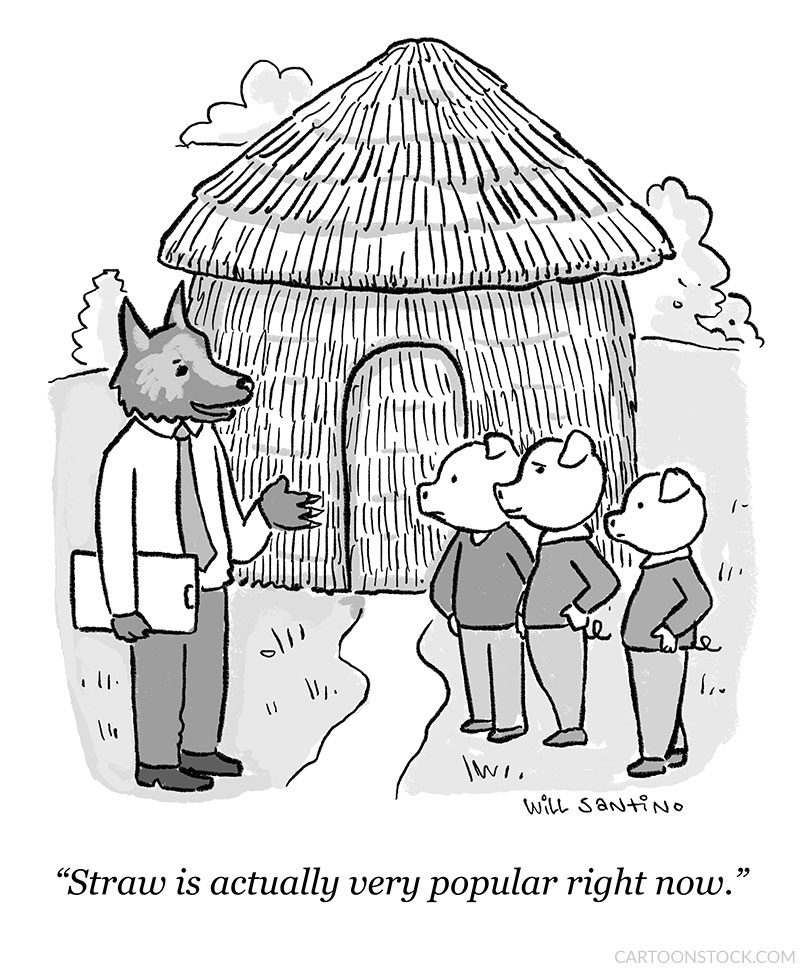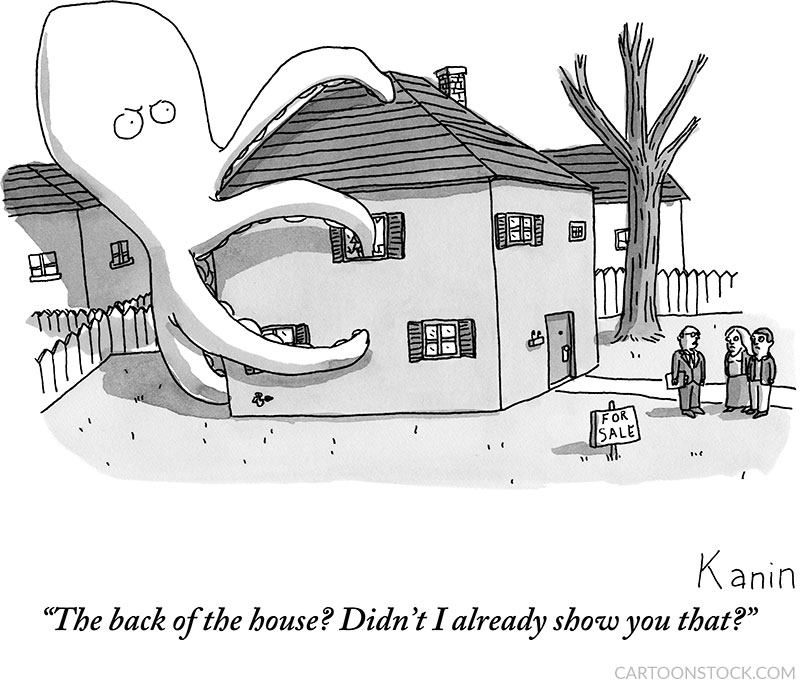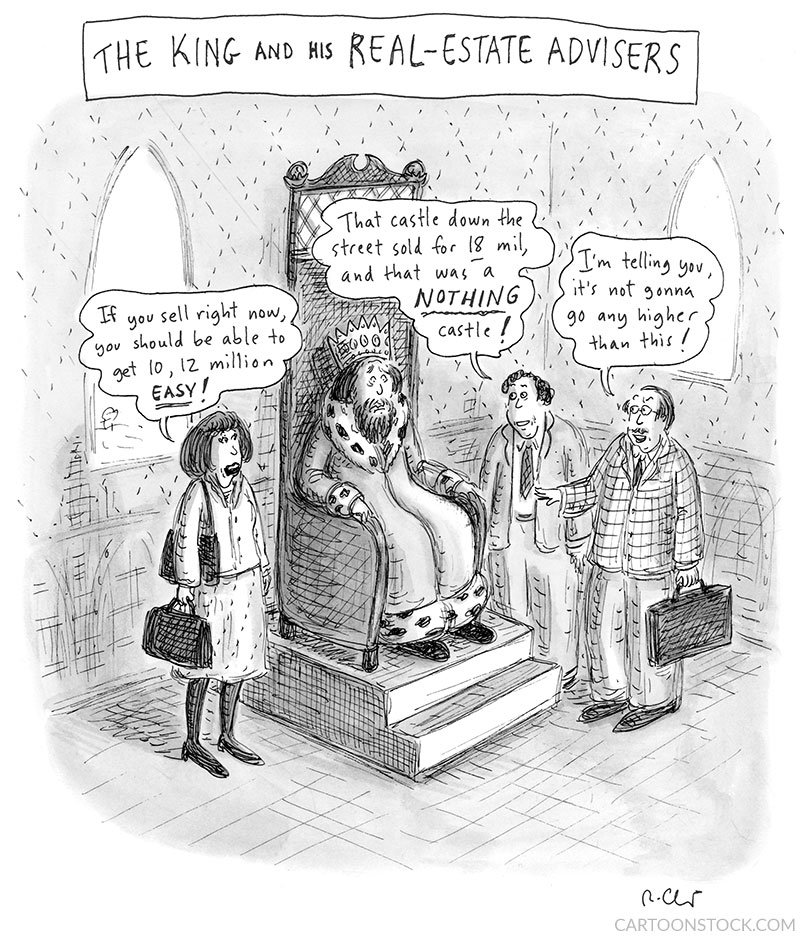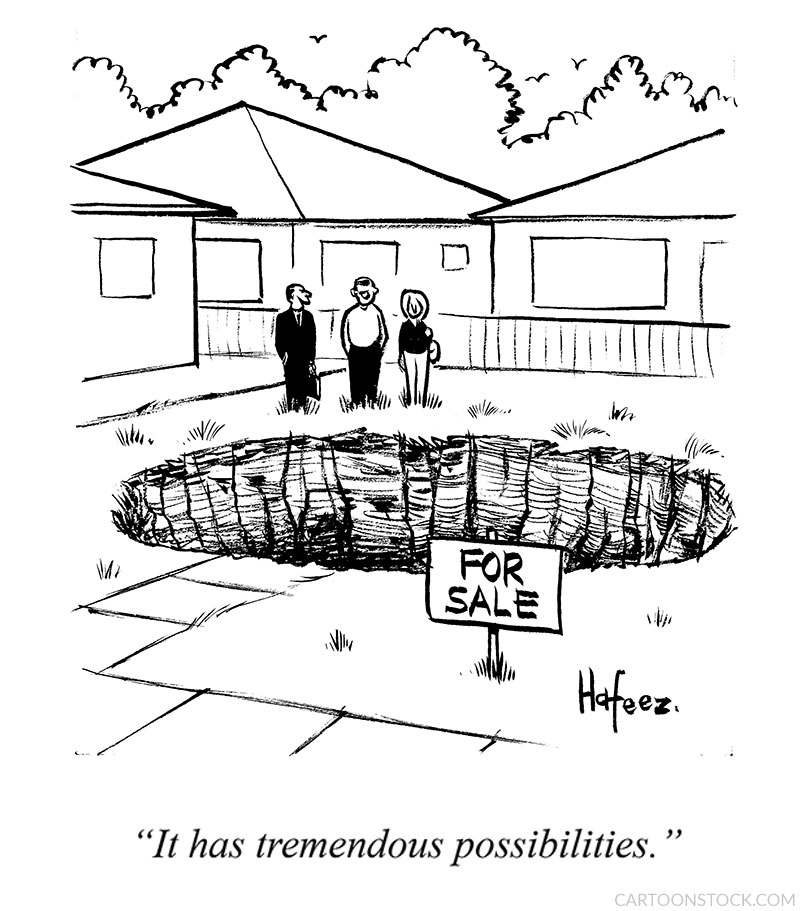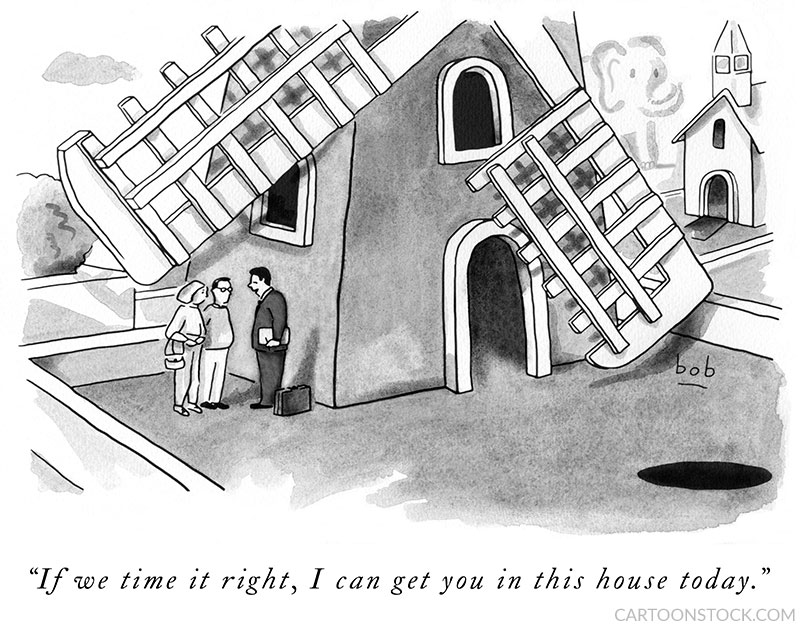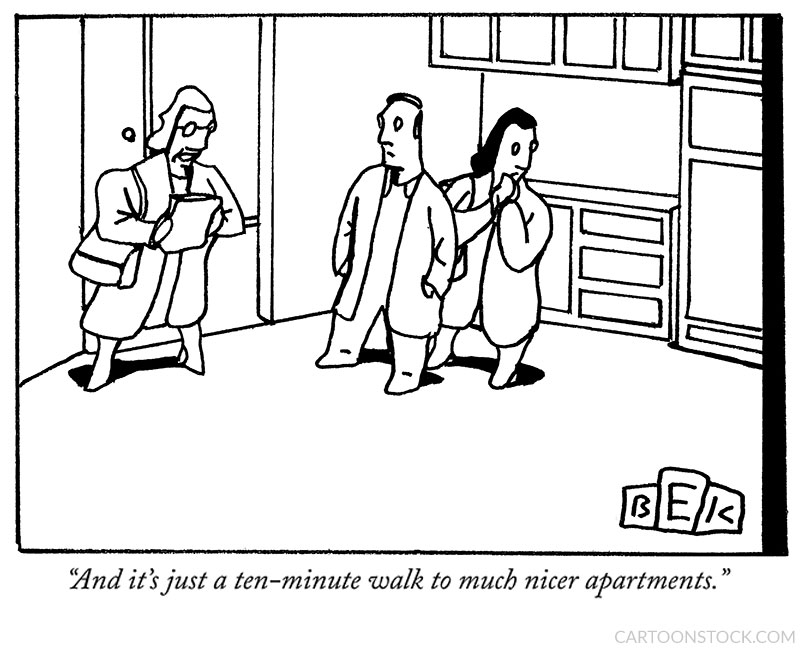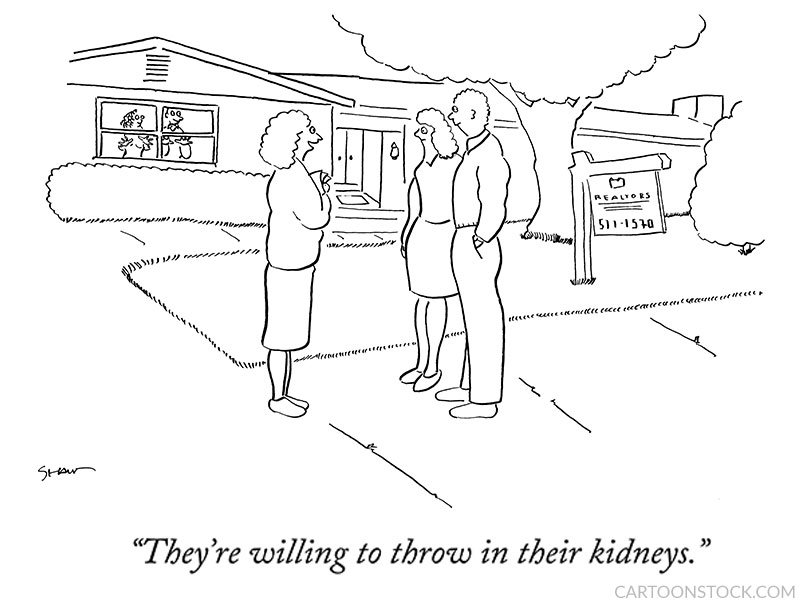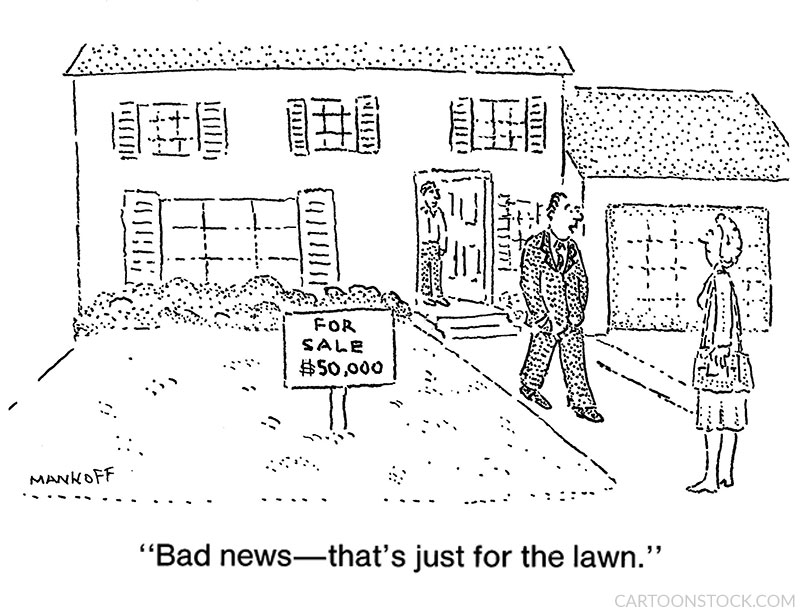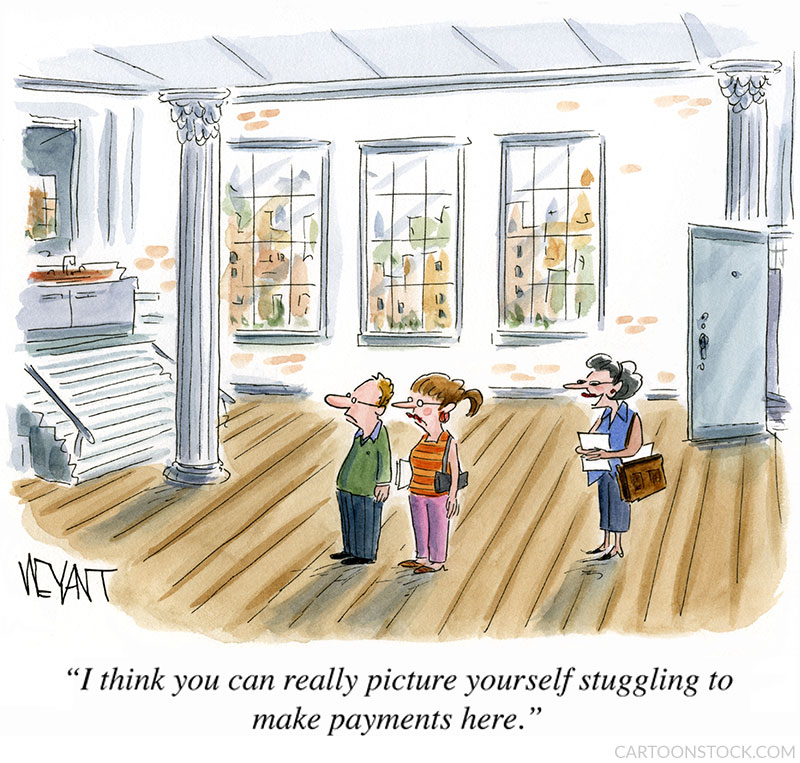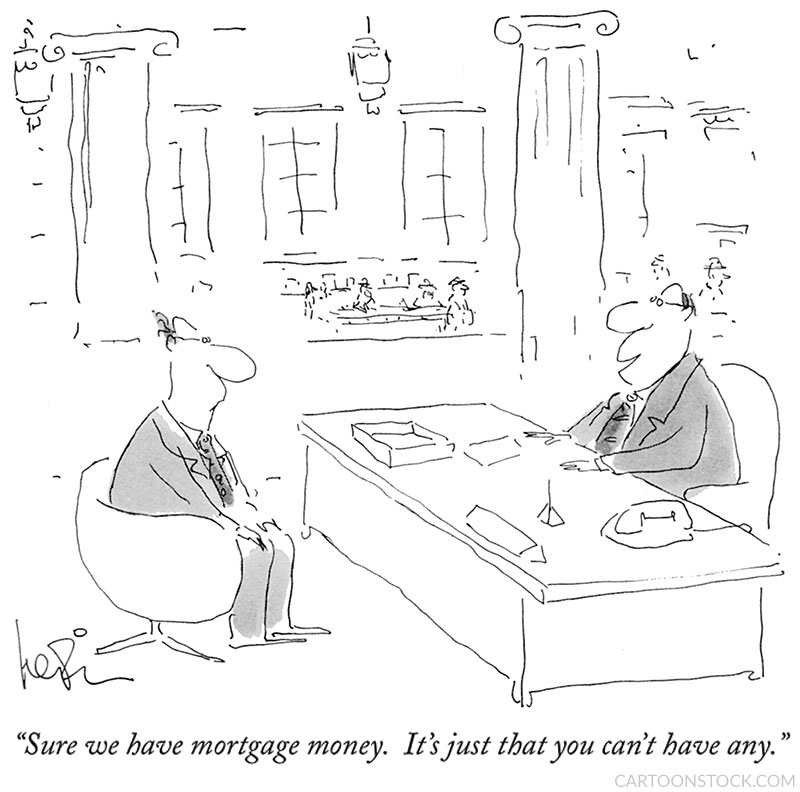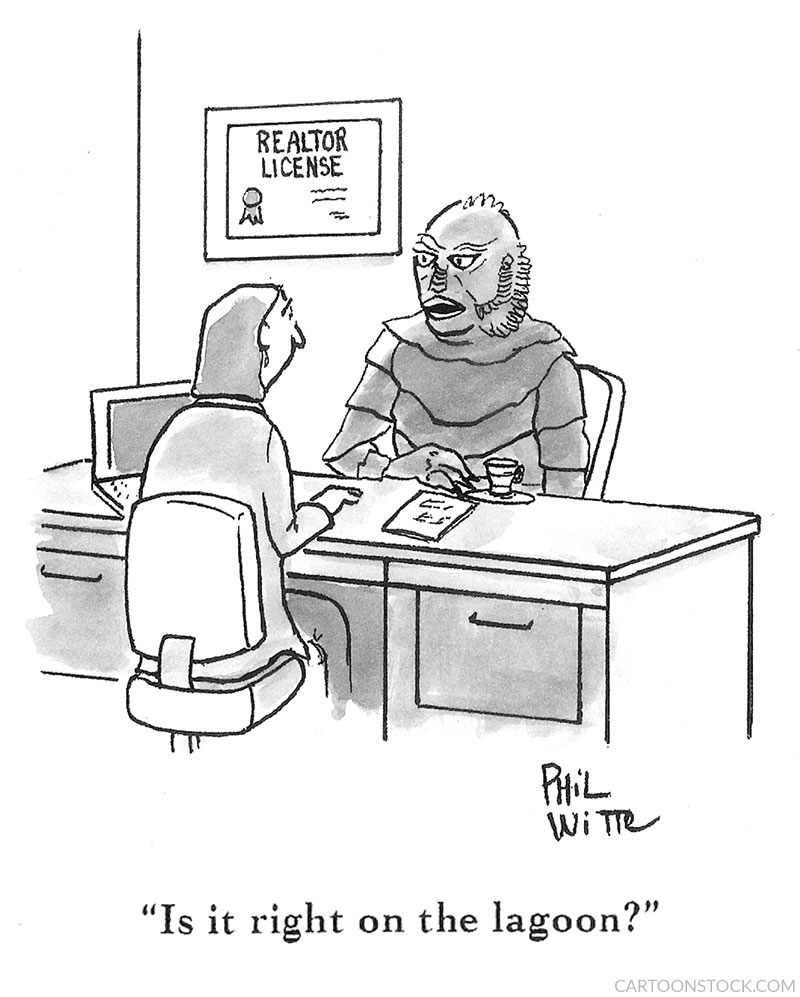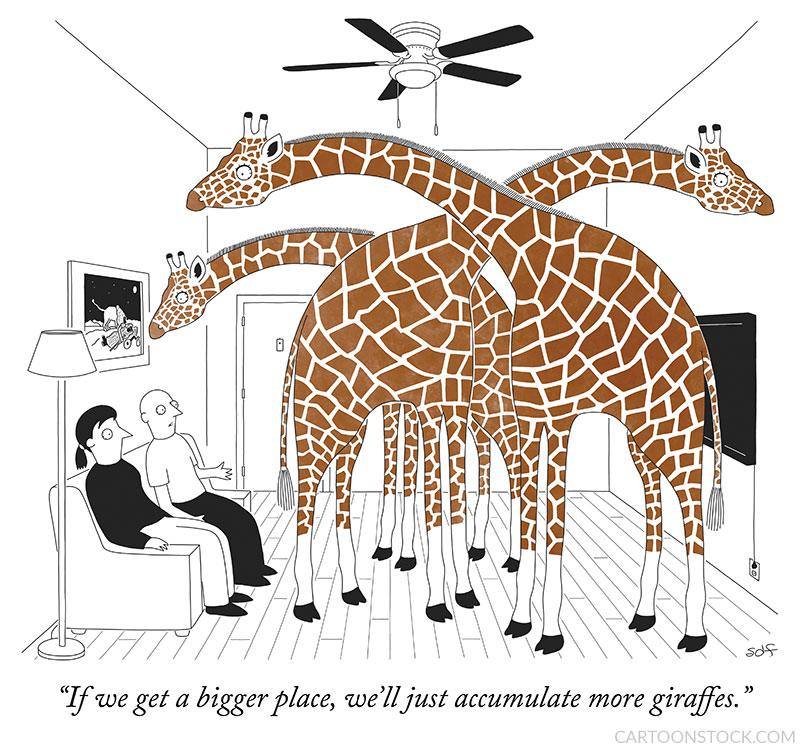 Cartoon critics Phil Witte and Rex Hesner look behind the gags to debate what makes a cartoon tick. This week our intrepid critics take a look at real estate cartoons.
Cartoon critics Phil Witte and Rex Hesner look behind the gags to debate what makes a cartoon tick. This week our intrepid critics take a look at real estate cartoons.
April showers bring May “For Sale” signs. The real estate season is in full swing for much of the country, and while virtual tours are still the norm, open houses will soon return to occupy the weekends of anxious house-hunters. Financial stress, frustration, and conflicting interests are hallmarks of home purchasing—all themes that real estate cartoons explore.
Fear not, O would-be buyer, for you do not go on your quest alone. The real estate agent is there to protect your interests, and maybe the seller’s interests, and definitely the realtor’s interests. These conflicting interests are the subject of Will Santino’s cartoon.
Realtors feel the pressure to close the deal and make their commission, leading some unscrupulous agents to deceive clients by omission. Zach Kanin considers what unseen horrors may await those who don’t perform their due diligence and wind up with a house with four bedrooms, two and a half baths, and eight tentacles.
Real estate is a high-stakes world, and realtors need to know how the market operates. To be truly successful, they must also know how the human mind works. No client wants to sell low or buy high. Even kings are not immune to their real estate advisers’ psychological tactics, as depicted in this cartoon by Roz Chast. Could His Highness be thinking of downsizing?
Realtors often put an optimistic spin on sub-optimal listings. They encourage clients to use their imaginations to transform an ugly house into something acceptable. Shabby homes have “good bones,” cramped, old homes are “cozy,” and even the worst of the lot has “potential.” If the property is a pit, literally in the case in Kaamran Hafeez’s cartoon, just add “tremendous.”
Bob Eckstein takes a fanciful approach to the art of the real estate deal. “Act now” is the message; even the property is not what you had in mind. A realtor might call this “a unique opportunity.”
Settling for less is a common experience for many home buyers and apartment hunters, but the realtor always looks on the bright side. Not known for sugar-coating reality, Bruce Eric Kaplan shows an agent educating her clients on the value of lowering one’s expectations.
Sometimes the buyer is in the driver’s seat. In these situations, the seller is said to be “motivated.” In tight markets, one party or the other often adds a “sweetener” to try to seal the deal. The realtor delivers the potentially enticing news to this couple in Michael Shaw’s cartoon.
The would-be home buyer must be realistic about pricing. As the saying goes, if it looks too good to be true, it probably is. In Bob Mankoff’s cartoon, one can’t really accuse the seller of false advertising, although some clarification seems to be in order.
Financing the home purchase may be the greatest source of stress. Christopher Weyant’s realtor tries to put a happy face on a situation where her clients may be facing a financially painful 30 years. But who can resist the high ceilings, period architecture, gorgeous views, and hardwood floors?
Unless you have a large pot of money, most home-buyers rely on a lender to obtain a mortgage. In his characteristically casual, charming style, Arnie Levin presents a loan officer who cheerfully gives a customer a reality check.
In a cartoon by Phil Witte, co-author of Anatomy of a Cartoon, another demanding but fictional client, in this case, a 1950s-era movie creature, wants to know what he’s getting into. The cliché “location, location, location” is particularly apt.
Sometimes the best strategy is to give up. Seth Fleishman presents a dizzying visual coupled with a gag that is both absurd and philosophical. Before contemplating moving to a larger abode, everyone should ask themselves, “How many giraffes do we really need?”


